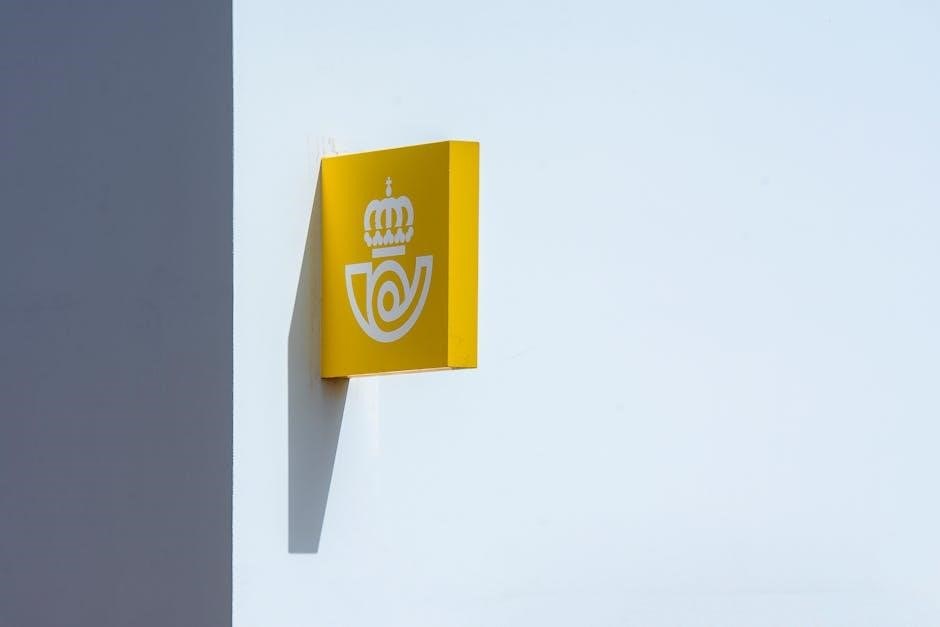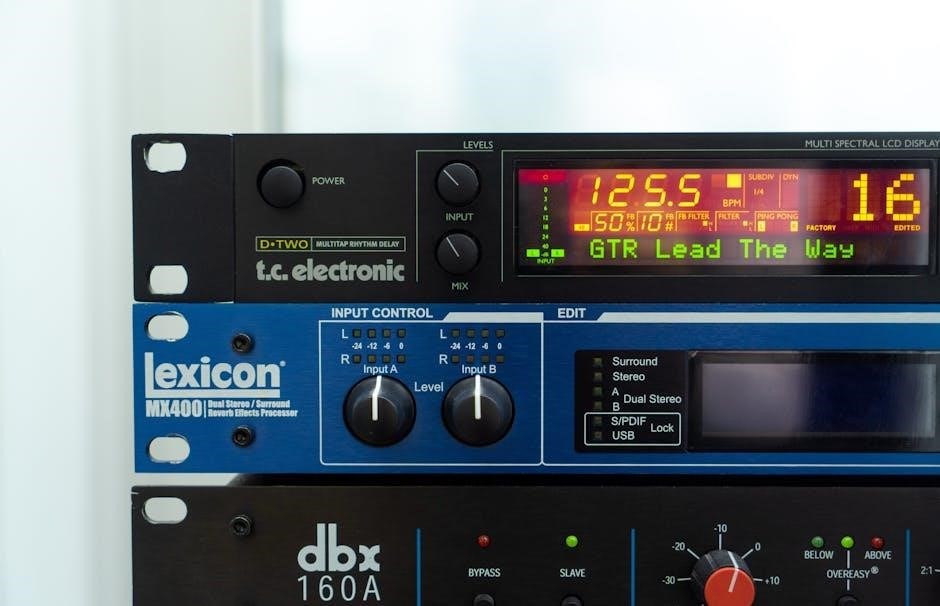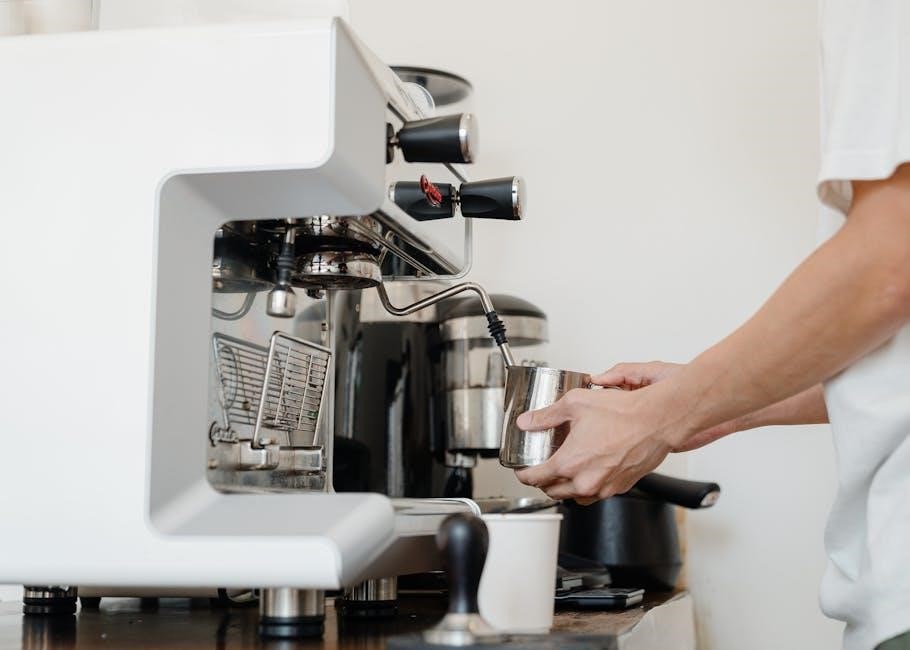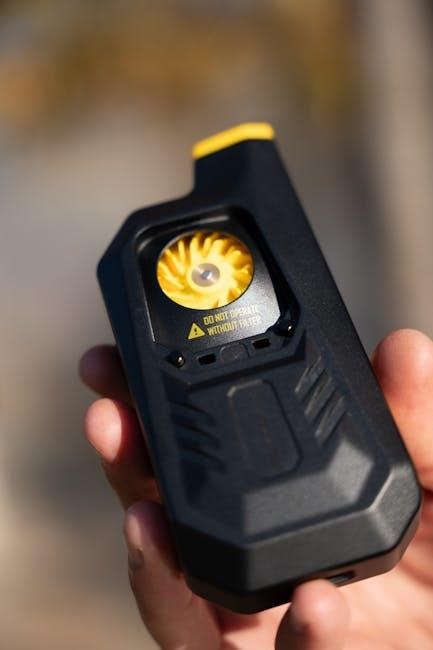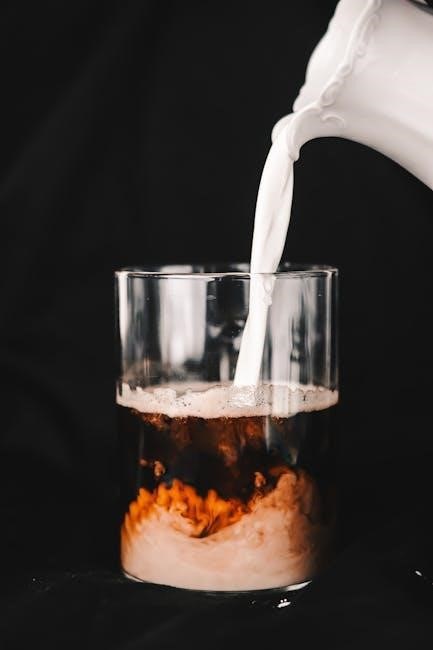Cuisinart DCC-1200 Instruction Manual: A Comprehensive Guide
Embark on a journey to master your Cuisinart DCC-1200 with this comprehensive guide. This manual provides detailed instructions, safety safeguards, and maintenance tips for optimal performance. Unlock the full potential of your coffeemaker for consistently delicious brews.
Overview of the Cuisinart DCC-1200 Brew Central Coffee Maker
The Cuisinart DCC-1200 Brew Central coffee maker is a popular appliance designed for households and offices that enjoy a substantial amount of coffee. With its 12-cup capacity, it caters to multiple coffee drinkers, ensuring everyone gets their caffeine fix. This coffee maker boasts a programmable function, allowing users to set a specific brewing time, so a fresh pot awaits them each morning.
The DCC-1200 includes a charcoal water filter, enhancing the taste of your coffee by removing chlorine, calcium, and unpleasant odors from the water. This ensures that the water, which constitutes 98% of coffee, contributes to a superior flavor profile. The self-cleaning feature simplifies maintenance, while the dripless pour spout and knuckle guard handle offer convenience and safety during serving.
The Brew Central DCC-1200 combines functionality and ease of use, making it a reliable choice for coffee enthusiasts. Whether you’re brewing a full pot or a smaller batch, this coffee maker aims to deliver a consistently great-tasting cup of coffee.
Key Features and Benefits of the DCC-1200
The Cuisinart DCC-1200 Brew Central Coffeemaker is packed with features designed to enhance your coffee brewing experience. Its 12-cup capacity is perfect for families or small offices, ensuring there’s always enough coffee to go around. The fully programmable function allows you to set a brew time up to 24 hours in advance, so you can wake up to the aroma of freshly brewed coffee.
One of the standout features is the Brew Pause™ function, which lets you pour a cup mid-brew without any drips or mess. The adjustable heater plate keeps your coffee warm for hours after brewing, and you can customize the temperature to your preference. The included charcoal water filter removes impurities from your water, resulting in a cleaner, better-tasting cup of coffee.
The self-cleaning function simplifies maintenance, while the easy-to-read LCD display and intuitive controls make the DCC-1200 a breeze to use. With its combination of convenience, performance, and durability, the Cuisinart DCC-1200 is a valuable addition to any coffee lover’s kitchen.
Important Safety Safeguards
To ensure safe operation of your Cuisinart DCC-1200 coffeemaker, it’s crucial to follow these safety precautions. Always read the instruction book carefully before using the appliance. Avoid touching hot surfaces; use handles or knobs. To protect against electrical shock, do not immerse the cord, plug, or base in water or other liquids. Close supervision is necessary when the coffeemaker is used by or near children.
Unplug the coffeemaker from the outlet when not in use and before cleaning. Allow it to cool completely before putting on or taking off parts, and before cleaning. Do not operate the coffeemaker with a damaged cord or plug, or after it malfunctions. Return the appliance to the nearest authorized service facility for examination, repair, or adjustment.
The use of accessory attachments not recommended by Cuisinart may cause injuries. Do not use outdoors. Do not let the cord hang over the edge of the table or counter, or touch hot surfaces. Never open the top cover during the brewing cycle, as hot water/coffee can spill out and cause injury. Ensure proper cleaning to prevent clogging and potential hazards. Failure to adhere to these guidelines could result in fire, electric shock, or personal injury.
Initial Setup and First Use
Before enjoying your first pot of coffee with the Cuisinart DCC-1200, a few initial steps are essential to ensure optimal performance and cleanliness. Begin by carefully unpacking the coffeemaker and removing all packing materials. Familiarize yourself with the various components, including the carafe, filter basket, water reservoir, and control panel. It’s highly recommended to retain all packing materials in case future shipping is required.
Next, clean the removable parts, such as the carafe and filter basket, with warm, soapy water. Rinse thoroughly and dry completely. Insert a charcoal water filter into the water filter holder to remove chlorine, calcium, and odors from your water, enhancing the flavor of your coffee. Fill the water reservoir with fresh, cold water to the maximum fill line.
To complete the initial setup, place a paper filter into the filter basket. Operate the coffeemaker once using only water, without adding coffee grounds. This process will eliminate any dust or residues that may have accumulated during manufacturing. After the cycle is complete, discard the water and filter. Your Cuisinart DCC-1200 is now ready for its first brewing experience.
Understanding the Control Panel
The Cuisinart DCC-1200’s control panel is designed for intuitive operation, allowing you to easily customize your brewing experience. The central feature is the On/Off switch, which initiates and terminates the brewing cycle. To the left, you’ll find the Program button, enabling you to set a delayed brewing time, ensuring your coffee is ready when you desire. Adjacent to the Program button is the Hour and Minute buttons, used in conjunction with the Program button to precisely set the desired start time.
The 1-4 Cup setting button is specifically designed for brewing smaller quantities of coffee, optimizing the heating process to maintain the ideal temperature for smaller batches. On the right side of the panel, you’ll notice the Self Clean button, which activates the decalcification cycle, essential for maintaining the coffeemaker’s performance. Finally, the Heater Plate Control knob allows you to adjust the temperature of the warming plate, keeping your coffee at your preferred serving temperature after brewing.
Understanding each button’s function empowers you to fully utilize the DCC-1200’s features for a tailored coffee brewing experience.
Brewing Coffee: Step-by-Step Instructions
Brewing coffee with the Cuisinart DCC-1200 is a straightforward process, ensuring a perfect pot every time. First, fill the water reservoir with the desired amount of fresh, cold water, keeping in mind that each cup is approximately 5 ounces. Next, insert a paper filter into the filter basket or use the included gold-tone filter, ensuring it is properly seated. Add your preferred ground coffee to the filter, using approximately one tablespoon per cup, adjusting to your taste. Close the reservoir cover securely.
Place the carafe on the warming plate and ensure it is properly positioned. Press the On/Off switch to begin the brewing cycle. For smaller batches (1-4 cups), press the 1-4 Cup button before pressing the On/Off switch to optimize the brewing temperature. The coffeemaker will automatically shut off once the brewing cycle is complete. Carefully pour and enjoy your freshly brewed coffee.
Remember to exercise caution when handling the hot carafe. Adjust coffee and water quantities to personal preference.
Programming the Coffeemaker
The Cuisinart DCC-1200 offers a programmable feature, allowing you to wake up to freshly brewed coffee. To program, first ensure the coffeemaker is plugged in. Press and hold the Program button until the display flashes. Use the Hour and Minute buttons to set the desired start time. After setting the time, press the Program button again to confirm. The display will show the set time.
Next, fill the water reservoir and add coffee to the filter as you normally would for brewing. Ensure the carafe is in place. To activate the programmed start, press the Program button again. The indicator light will illuminate, confirming the setting. The coffeemaker will automatically begin brewing at the programmed time.
To cancel the programmed start, press the On/Off button. The programmed time will remain stored until changed or the unit is unplugged. Enjoy the convenience of waking up to freshly brewed coffee.
Using the 1-4 Cup Setting
The Cuisinart DCC-1200 is equipped with a 1-4 cup setting, designed to optimize brewing for smaller batches. This feature is particularly useful when you don’t need a full carafe of coffee. Standard coffeemakers often struggle to maintain optimal temperature when brewing smaller quantities, resulting in a weaker, colder brew. The 1-4 cup setting addresses this issue by adjusting the brewing process to ensure a hotter, more flavorful cup.
To use the 1-4 cup setting, first, fill the water reservoir with the appropriate amount of water for 1 to 4 cups. Add the corresponding amount of ground coffee to the filter basket. Then, press the 1-4 cup button located on the control panel. The indicator light will illuminate, signaling that the setting is activated.
Next, press the On/Off button to begin the brewing process. The coffeemaker will now adjust the heating cycle to properly saturate a smaller amount of coffee.
Adjusting the Heater Plate Keep Warm Control
The Cuisinart DCC-1200 offers a convenient feature to customize the temperature of the heater plate, allowing you to keep your brewed coffee warm for an extended period. This adjustable “Keep Warm” control ensures your coffee stays at your preferred temperature without burning or becoming bitter. The control knob is typically located on the control panel, providing easy access and intuitive operation.
The heater plate control usually offers three settings: Low, Medium, and High. The Low setting is ideal for maintaining a moderate temperature, preventing the coffee from cooling too quickly without overheating. The Medium setting provides a balanced level of warmth, suitable for most preferences. The High setting is designed to keep the coffee at a higher temperature, ideal for those who prefer their coffee very hot or plan to consume it over a longer duration.
To adjust the heater plate temperature, simply turn the control knob to your desired setting after brewing. Experiment with different settings to find the perfect temperature that suits your taste.
Cleaning and Maintenance: A Detailed Guide
Maintaining your Cuisinart DCC-1200 is crucial for optimal performance and longevity. Regular cleaning prevents mineral buildup, ensures consistent flavor, and extends the lifespan of your coffeemaker. This detailed guide provides step-by-step instructions for keeping your DCC-1200 in top condition.
Daily Cleaning: After each use, always turn off and unplug the coffeemaker. Discard the paper filter and coffee grounds. Wash the filter basket and carafe with warm, soapy water and rinse thoroughly. These parts are also dishwasher-safe (top rack recommended). Wipe the exterior of the coffeemaker with a damp cloth.
Monthly Cleaning: Periodically clean the spray head and water reservoir to remove any residue. The spray head can be detached and washed. The water reservoir can be wiped clean with a damp cloth. Avoid using abrasive cleaners or scouring pads, as they can damage the surfaces.
Descaling: Depending on your water hardness, descale your coffeemaker every 1-3 months. Use a descaling solution or a mixture of white vinegar and water. Follow the instructions in the “Decalcification Process” section for detailed steps.
Decalcification Process
Decalcification, or descaling, is the process of removing calcium deposits that accumulate over time in your Cuisinart DCC-1200. These mineral deposits can affect the performance of your coffeemaker and the taste of your coffee. Regular decalcification ensures optimal brewing and extends the life of your appliance.
When to Decalcify: The “Self Clean” light on your DCC-1200 will flash when decalcification is needed. The frequency depends on your water hardness and usage. Generally, decalcify every 1-3 months or when the “Self Clean” light illuminates.
Decalcification Solution: You can use a commercial descaling solution or a mixture of white vinegar and water. A common ratio is 1/3 white vinegar to 2/3 water.
Steps for Decalcification:
- Fill the water reservoir with the descaling solution.
- Press and hold the “Self Clean” button until the light illuminates.
- Press the “On/Off” button to start the cleaning cycle.
- The coffeemaker will pause periodically during the cycle.
- Once the cycle is complete, the coffeemaker will beep and shut off.
- Run a full brewing cycle with fresh water to rinse the system. Repeat if necessary.
Troubleshooting Common Issues
Encountering issues with your Cuisinart DCC-1200? Here’s a guide to troubleshoot common problems and restore optimal performance. Before attempting any repairs, always unplug the coffeemaker from the power outlet.
Coffee Maker Not Turning On:
- Check if the coffeemaker is properly plugged into a functioning outlet.
- Ensure the power switch is in the “On” position.
- Verify that the thermal fuse hasn’t blown. If it has, contact Cuisinart customer support.
Coffee Not Brewing:
- Make sure the water reservoir is filled to the appropriate level.
- Check if the filter basket is properly inserted and not overflowing.
- Ensure the carafe is correctly placed on the warming plate.
- Descale the coffeemaker if the “Self Clean” light is illuminated.
Coffee Brewing Too Slowly:
- The grind size may be too fine. Use a medium-fine grind for best results.
- Too much coffee grounds may be used. Use the correct coffee-to-water ratio.
- The filter may be clogged. Replace the paper filter or clean the reusable filter.
Coffee Tastes Bitter:
- Over-extraction can cause bitterness. Reduce brewing time.
- Use fresh, filtered water for best flavor.
- Clean the coffeemaker regularly to prevent residue buildup.
Leaking:
- Ensure the carafe is properly seated on the warming plate.
- Check for cracks or damage to the water reservoir or carafe.

